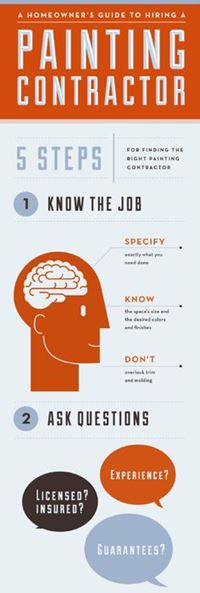Discover The Influence Of Seasonal Elements On The Efficiency Of Commercial External Paint And Recognize The Optimal Times To Achieve Long-Lasting Results For Your Project
Discover The Influence Of Seasonal Elements On The Efficiency Of Commercial External Paint And Recognize The Optimal Times To Achieve Long-Lasting Results For Your Project
Blog Article
Content Produce By-Ford Browne
When you're preparing a business outside paint project, seasonal factors can make or damage your results. You'll wish to consider how temperature level and humidity influence paint application and drying out times. Selecting the appropriate period can guarantee your paint sticks properly and lasts longer. Yet which seasons are absolutely the most effective for this kind of work? Allow's check out the crucial elements that can affect your project's success.
The Effect of Temperature on Paint Application
When you're planning a commercial external paint task, the temperature can substantially impact just how well the paint sticks and dries out.
Preferably, you intend to paint when temperatures range in between 50 ° F and 85 ° F. If it's too chilly, the paint might not heal appropriately, resulting in concerns like peeling or fracturing.
On the other hand, if it's too hot, the paint can dry as well promptly, stopping correct attachment and leading to an irregular surface.
You ought to also take into consideration the moment of day; early morning or late afternoon uses cooler temperature levels, which can be more desirable.
Constantly examine the producer's suggestions for the certain paint you're using, as they often provide support on the optimal temperature range for optimum results.
Moisture and Its Impact on Drying Times
Temperature level isn't the only environmental factor that affects your industrial external paint job; moisture plays a substantial duty as well. High humidity levels can slow down drying out times considerably, impacting the general top quality of your paint work.
When the air is saturated with moisture, the paint takes longer to heal, which can bring about issues like poor bond and a greater danger of mold development. If straight line on a specifically moist day, be prepared for extended wait times in between layers.
It's important to keep track of local climate condition and plan accordingly. Ideally, go for humidity levels between 40% and 70% for optimum drying.
Keeping these factors in mind ensures your job remains on track and supplies a lasting surface.
Best Seasons for Commercial Outside Paint Projects
What's the most effective time of year for your commercial exterior paint jobs?
Springtime and very early loss are typically your best bets. Throughout these seasons, temperatures are moderate, and humidity degrees are frequently lower, creating ideal conditions for paint application and drying.
mn painting contractor , which can trigger paint to dry also quickly, bring about bad adhesion and finish. In a similar way, winter's cold temperature levels can impede proper drying and treating, taking the chance of the durability of your paint task.
Go for days with temperature levels between 50 ° F and 85 ° F for optimum outcomes. Bear in mind to check the local weather forecast for rainfall, as wet problems can wreck your project.
Planning around these elements guarantees your paint project runs smoothly and lasts longer.
Final thought
Finally, planning your commercial external painting jobs around seasonal considerations can make a substantial difference in the end result. By scheduling work during the ideal temperature levels and humidity levels, you'll make sure far better adhesion and drying times. Keep in mind to watch on local weather prediction and pick the right time of year-- spring and early loss are your best options. Taking these actions will assist you accomplish a resilient and expert surface that lasts.
